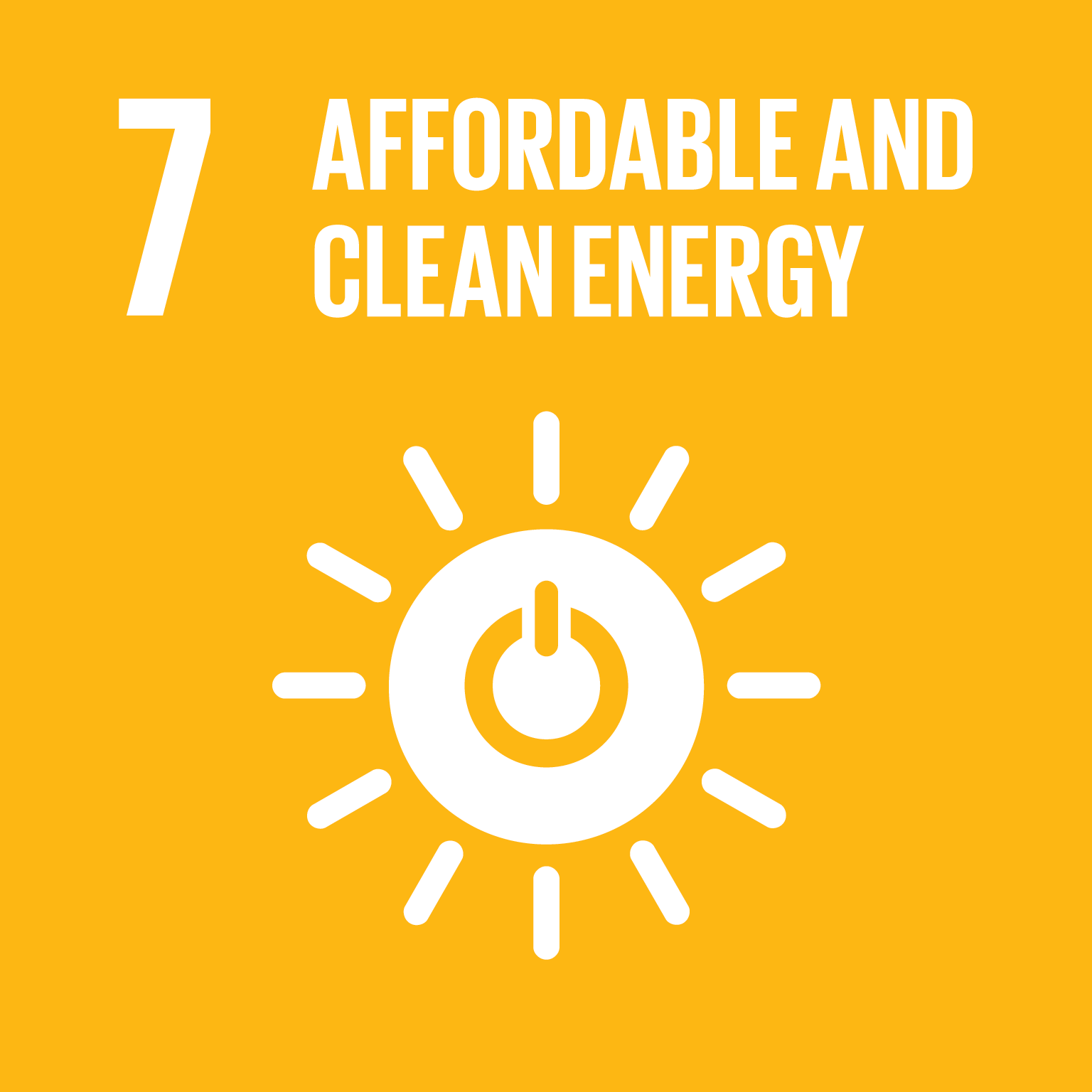240,000
Equivalent households
CLEAN, NON-POLLUTING ENERGY
Ensure access to affordable, reliable, sustainable and modern energy for all
1 in 8 people still do not have access to electricity. In order to ensure access to affordable, reliable, sustainable and modern energy for all, it is necessary to increase the use of renewable energy from 25 % today to 38 % in 2025.
ACCIONA is positioning itself as a key player in addressing the growth in energy demand while curbing the progress of global warming and promoting the transition to a decarbonized energy model.
CLIMATE ACTION
Take urgent action to combat climate change and its impacts
The generation and use of energy is responsible for 74 % of total greenhouse gas emissions in the world. This activity is the largest contributor to global warming. Investment in renewable energy, energy efficiency and other low carbon technologies will continue to be essential to meet the new needs of humanity and to minimise their negative impact on the environment.
ACCIONA considers the fight against climate change and its related effects to be a strategic priority. The Company is working to mitigate greenhouse gas emissions in order to contribute to the progress of society and respond to the main challenges of sustainable development in the areas of infrastructure, water and energy, leading the transition to a low-carbon economy.
With 246 MWp peak capacity, El Romero Solar produces energy equivalent to the consumption of around 240.000 Chilean homes. Eighty megawatt are used to power 100% the Google's data center in Chile.
Located in the municipality of Vallenar, in the Atacama Region, 645 km north of the capital Santiago, the new facility is able to generate 493 GWh of clean energy a year on average, avoiding the emission of around 474,000 metric tons to the atmosphere in coal-fired power stations.
The El Romero Solar plant covers 280 hectares in one of the driest places on the planet. It has a high level of solar radiation and very clean air, which facilitates the capture of the sun’s energy. These factors have been crucial in the installation of astronomical observatories in the area.
The plant is equipped with 776,000 polycrystalline silicon photovoltaic modules, making up a solar capture surface of over 1.5 million m2 (equivalent to 211 professional soccer pitches). The panels are installed on static metal structures which, if lined up, would have a total length of over 196 kilometers.
GENERAL INFORMATION
- Location: Vallenar municipality, Region of Atacama (Chile).
- Peak capacity: 246 MWp.
- Nominal capacity: 196 MW.
- Technology: Solar photovoltaic on static structures.
- Start up: November, 2016.
- Owner: ACCIONA
KEY POINTS
- The biggest PV solar plant in Latin America and one of the largest in the World when grid-connected.
- The PV project with the highest capacity developed by ACCIONA Energy by then.
- Owned by ACCIONA, with an USD 343m investment
- 493 GWh annual average output.
- Enough clean energy to power 240,000 Chilean homes
- Part of its production will supply the Google's data center in Chile
- Emission of 473,000 metric tons of CO2 a year avoided from coal-fired power stations.
- Total area of 280 hectares, with 150 hectares of solar capture surface.
- 776,000 polycrystalline silicon photovoltaic modules.
- With more than 55 millon solar cells
- Mounted on metal static structures covering 196 kilometers if lined-up
- 180 converters DC/AC of 1.089 MW.
- New substation (33/220 kV) connected with the Pan de Azucar-Maitencillo line, belonging to the SIC grid.
Key figures
246 MWp
megawatts of peak power
240,000
households supplied
776,000
photovoltaic panels
474,000
tons of CO2 into the atmosphere avoided
+500
new jobs
493 GWh
Average annual production
Technology and innovation
GREENCHAIN®
The GREENCHAIN® project was born with the purpose of providing our customers with real-time traceability of energy from our renewable generation plants and storage systems to their points of consumption. To this end, not only is this information integrated into an interface that our clients can use to visualize or download the data or display dynamically in their facilities as a marketing tool, but it is also recorded in blockchain to increase transparency. This software tool also integrates information on the social initiatives that ACCIONA carries out in the communities where its generation plants are located, with the aim of making our clients participants in the social commitment that characterizes ACCIONA.
The I'MNOVATION Startups program was the umbrella under which the first pilot for this solution was developed.
Hub el Romero Solar
ACCIONA has created a hub at its El Romero plant to test new photovoltaic technologies that can increase the efficiency and performance of solar installations, in particular the mechanical and energy performance of bifacial crystalline technology, split-cell and thin-film cadmium telluride (CdTe) modules, technologies that are expected to mark the future evolution of photovoltaic energy.

